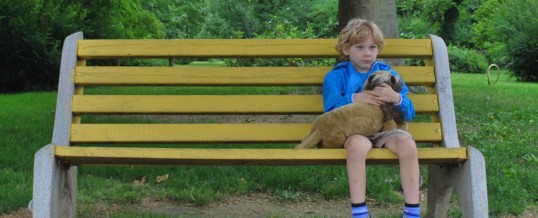
Bullying, a topic of concern to parents nationwide, is really a 2-year-old trouble. Toddlers can be very mean—biting, hitting and snatching things from others. This is why it is important for parents to be firm with toddlers.
“No. That’s mean and mommy (or daddy) want you to be a kind boy.” This message has to be repeated over and over again through the years whenever you see your child engaging in hurting behavior. Parents must be watchful and immediately intervene.
If your child is engaged in a group activity with peers and gets aggressive, he/she needs to be temporarily excluded. “You can join us again when you’ve settled down, but there’s not going to be any meanness. Kickball is meant to be fun.”
In my many years of work with bullies, I have never met one who did not eventually describe an incident of bullying directed at him or her.
Sometimes they were bullied by a parent, sometimes not. But all reported someone glaring at or making ridiculing/threatening comments to them. And this very behavior was passed along to a younger or somehow more vulnerable peer.
Here it is important to remember that a bully is looking for a particular response — a child who will be intimidated just as he or she was. But bullies need to talk about the incident that scared them and made them feel unsafe rather than doing to others what was done to them. And they also need to apologize for their mean behavior and realize that adults will be watching them to assure it doesn’t happen again.
Bullies get great excitement out of intimidating. So children need to take the excitement out of it by acting bored in response to their meanness.
Then the bully will move on to another who will fall into their trap. But this is a tall order for children.
So, if your child has been the victim of bullying, it is important to devise a protection plan. Don’t be too quick to jump in there and offer suggestions. Let your child take the lead. “It’s important to keep you safe. How can we do that?” In this way, you are helping your child be active (rather than passive) on his or her own behalf.
This protection plan may well include school personnel. For example, your child may need to tell the teacher if someone is mean to him/her, or stay close to staff on the playground.
Every now and then I run across a child who will not abide by the protection plan and seems to invite bullying from multiple sources. In this situation, the child is part of the problem and needs professional help. Likewise, if a bully continues his or her mean streak—get counseling.
Image by Mojca JJ from Pixabay
JAN
2020


About the Author:
Victoria Todd, LISW-S, Child & Adolescent Psychoanalyst, is a summa cum laude graduate of Case Western Reserve University with a B.A. in Sociology and Psychology and a master’s degree in Social Administration. She developed the “My Mad Feelings” curriculum to prevent bullying by working with children as young as 4 to understand their emotions and appropriately express themselves. A qualified child psychoanalyst, she completed her training at the Hanna Perkins Center for Research in Child Development. A member of the American Psychoanalytic Association, the Association for Child Psychoanalysis and the Cleveland Psychoanalytic Center, she teaches classes and workshops at Case Western Reserve University. She served on the Treatment Subcommittee of the Ohio Child Sexual Abuse Grant and was a member of the Guardian ad Litem Advisory Board and the Children at Risk Coalition.